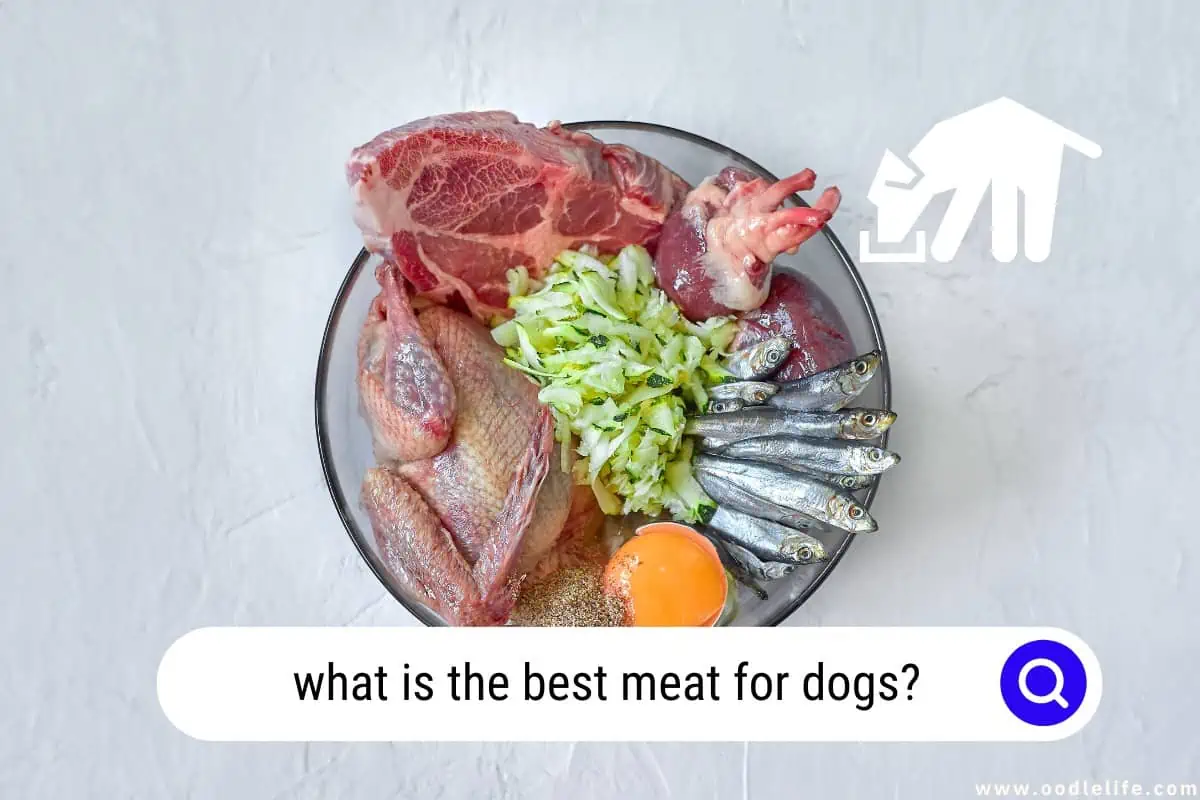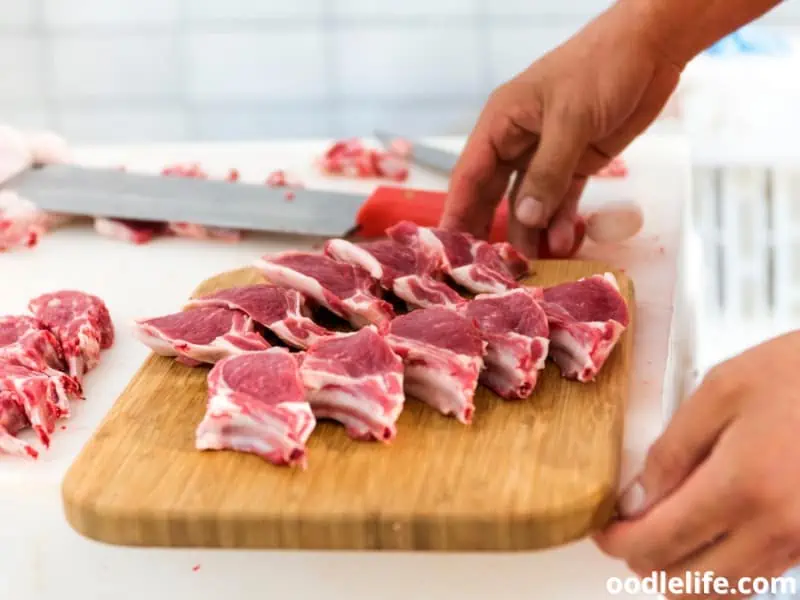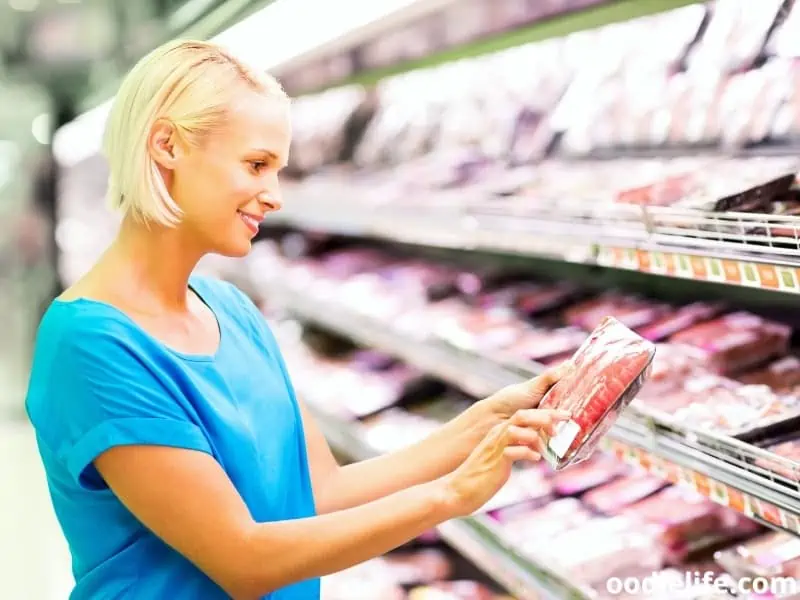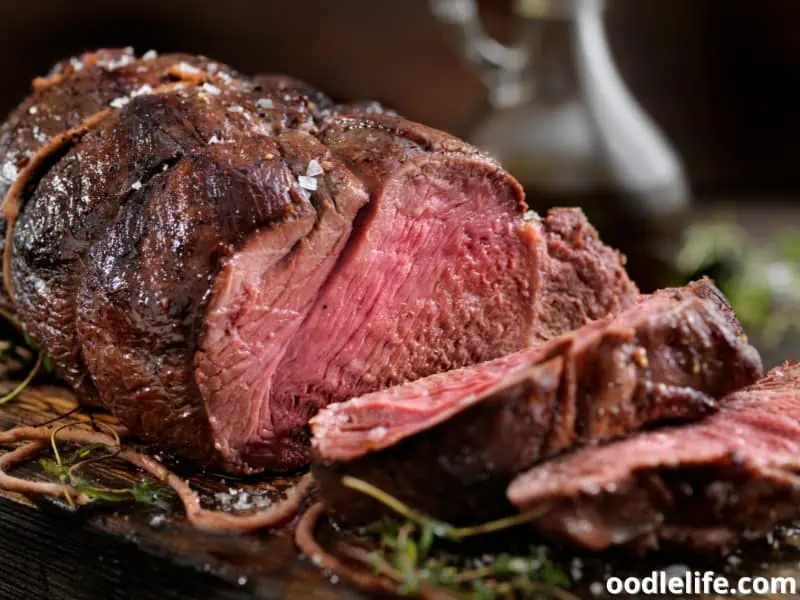What Is The Best Meat For Dogs? (2024)
If dogs could speak, they’d probably ask for a big, juicy steak. But, as responsible pet owners, we must ensure we’re feeding our canine friends the right kind of meat. After all, their health is our top priority.
But how do you choose the best meat for your canine friend when so many varieties are available? That’s why we’re here to help you choose the best meat for your dogs in 2023.

So, put down that can of mystery meat and prepare to enter the world of doggy gastronomy.
1. Beef
Your dog may have drooled over a mouthwatering steak or a beef patty, but is it the healthiest meat option? Let’s take a look.

Beef Nutritional Information
Beef is abundant in protein, which is necessary for muscular development and repair in dogs. It also has vitamins and minerals, including B12, iron, and zinc.
Potential Health Risks
Some cuts of beef are high in fat, which can lead to weight gain and other health issues. Additionally, beef can be a common allergen for some dogs, leading to skin irritations and digestive issues.
Verdict
So, should you serve your dog a beefy feast or not? The verdict is that it depends on your individual dog’s needs and preferences. If your dog enjoys beef and has no allergies or medical conditions that would prohibit them from doing so, beef may be a terrific addition to its diet.
However, if your dog is overweight or prone to digestive issues, you may want to choose leaner meats or limit their beef intake. As always, consult with your veterinarian to determine the best diet for your dog.
2. Chicken
Chicken, chicken, everywhere. It’s a staple in many human diets, but what about our furry friends? Is it clucking fantastic for dogs?

Let’s ruffle some feathers and take a closer look.
Nutritional Information
Chicken is a feather-rific source of protein for dogs, perfect for building muscle and repairing tissues. It’s also packed with essential vitamins like vitamin B6 and niacin, which keeps their skin healthy and coat lustrous. Plus, it has omega-6 fatty acids, which help boost the immune system.
It’s no wonder dogs love to chase after those feathered creatures!
Potential Health Risks
But wait! Don’t chicken out just yet. One concern with feeding chicken to dogs is the risk of salmonella and other harmful bacteria that can cause food poisoning in both pups and humans.
So be sure to cook it thoroughly and handle it safely to avoid a “fowl” mess.
Another concern is the use of antibiotics in chicken farming, which can lead to antibiotic-resistant bacteria and harm our dog’s health. So, choose and prepare meat responsibly.
Verdict
In the battle of the meats, chicken is a strong contender. It’s affordable, widely available, and packed with beneficial nutrients for your furry friend. However, it’s important to be mindful of the potential risks and take proper precautions, such as cooking the chicken thoroughly and introducing it to your dog’s diet gradually.
So, go ahead and treat your pup to some tasty chicken; just don’t let them turn into chicken thieves!
3. Turkey
Gobble gobble, it’s time to talk about turkey as a potential meat option for our dogs. Is it a bird-brained decision or a smart move? Let’s find out.

Nutritional Information
Turkey is packed with essential amino acids that help support your dog’s muscle growth and repair. It’s also loaded with vitamin B6, necessary for proper brain function and metabolism, and niacin, which promotes a lustrous coat and healthy skin. And let’s not forget about zinc, which helps boost your dog’s immune system.
Potential Health Risks
While turkey may seem like a safe bet, there are a few potential health risks. The biggest concern is the risk of salmonella and other harmful bacteria that can cause food poisoning in dogs and humans.
As with chicken, it’s essential to ensure that turkey is cooked thoroughly and handled safely to minimize this risk. Additionally, some dogs may have allergies to turkey, so monitor your pet for any signs of an adverse reaction.
Verdict
Overall, turkey can be an excellent option for dogs if prepared safely and cooked thoroughly. However, it’s important to note that turkey shouldn’t be the only protein source in your pup’s diet, as variety is key to ensuring they get all the necessary nutrients. So, while you may be tempted to save the Thanksgiving turkey leftovers for your dog, just make sure to mix it up with other meats and protein sources for a well-rounded diet.
4. Lamb
Now let’s talk about the fancy meat of the bunch, lamb. It’s the type of meat you’d imagine being served at a fancy dinner party, but is it good enough for our four-legged friends? Let’s put on our monocles and find out.

Nutritional Information
Lamb is a protein powerhouse for dogs and contains all the essential amino acids necessary for their growth and development. It’s also rich in iron, which helps transport oxygen through the blood, and vitamin B12, which helps support brain and nerve function. Plus, it contains zinc, which promotes healthy skin and a robust immune system.
Potential Health Risks
Now, hold your monocles steady, folks, as we discuss the potential health risks associated with lamb. Its high-fat content may not be suitable for dogs prone to weight gain or pancreatitis. And, just like any meat, lamb can trigger allergies in some dogs, so it’s important to watch for any adverse reactions.
Lastly, proper cooking and handling are crucial to minimizing the risk of foodborne illnesses.
Verdict
Overall, lamb can be a delightful addition to your dog’s diet, but it’s important to consider their specific nutritional needs and potential allergies before giving them a taste. And, to ensure they stay healthy and happy, choose lean cuts of lamb and cook it thoroughly to eliminate harmful bacteria. So, let’s raise a glass of water to our canine friends and enjoy their company while they enjoy their lamb.
5. Fish
Now let’s dive into the ocean of possibilities and talk about fish as a potential meat option for our furry friends. Will it make a splash or leave us high and dry? Let’s find out.

Nutritional Information
Fish is an excellent source of lean protein for dogs, rich in omega-3 fatty acids, which support brain function and heart health. Additionally, fish contains vitamins such as vitamin D, which helps with bone health, and minerals such as selenium, which plays a role in antioxidant defense.
Potential Health Risks
One potential concern with feeding fish to dogs is the risk of mercury contamination, which can cause health issues in both dogs and humans. It’s important to choose low-mercury fish such as salmon, sardines, and trout and limit the amount of fish in your dog’s diet to avoid potential toxicity.
Additionally, bones in certain types of fish can pose a choking hazard or cause internal injury, so it’s crucial to ensure that fish is prepared correctly and free of bones before feeding it to your dog.
Verdict
Overall, fish can be a healthy and tasty option for dogs, but it’s important to be mindful of potential health risks and choose low-mercury fish while taking care to remove any bones.
Additionally, make sure you consider your dog’s unique dietary needs and any potential allergies before adding fish to its diet. If done correctly, feeding fish can be a great way to supplement your dog’s diet with essential nutrients and give them a delicious and nutritious treat. So let’s get our paws on some fresh fish and see if our dogs go overboard with excitement!
6. Bison
Yeehaw! Let’s talk about bison, the meat that’s so good even the cowboys would trade in their beef for it. But is it worth the extra bucks for our canine companions? Let’s find out.

Nutritional Information
Bison is a protein powerhouse chock-full of essential amino acids for dogs. It’s also rich in iron, which helps keep their blood pumping, and zinc, which keeps their skin and immune system healthy. Plus, it’s a lean meat option, making it a great choice for dogs watching their waistlines.
Potential Health Risks
One concern with bison is the risk of bacterial contamination, like E. coli and salmonella, which can be harmful to both dogs and humans. So, handle that raw meat carefully and cook it thoroughly to minimize this risk. And, since bison can be pricier than other meats, it may not be the best choice for those paw parents on a tight budget.
Verdict
Overall, bison is a great option for dogs, especially those with allergies or sensitivities to other meats. Just make sure to choose high-quality cuts and cook it properly. And while it may not be the most wallet-friendly option, it’s worth seeing your pup chow down on something special.
So, why not let them indulge in a little bit of the wild side? Yeehaw!
7. Venison
Let’s talk about venison, the deer meat that’s so fancy, it’s like the filet mignon of the wild. But is it a worthy meal for our pet dogs? Let’s find out.

Nutritional Information
Venison is a lean and mean protein source packed with essential amino acids and other important nutrients for dogs. It’s high in iron, which makes it great for dogs with anemia, and B vitamins, which help keep their brains sharp and their metabolism going. Plus, if your dog has a sensitive stomach or food allergies, venison is a great alternative to other meats.
Potential Health Risks
Like with most meats, one potential concern with venison is the risk of bacterial contamination, particularly E. coli and salmonella. You don’t want your pup to have the runs or end up with a nasty infection.
So make sure to choose high-quality cuts of venison and cook it thoroughly to minimize this risk. Additionally, because venison is wild game meat, there is a risk of exposure to certain parasites that can be harmful to dogs.
Verdict
Overall, venison can be a healthy and flavorful option for dogs, especially those with food sensitivities or allergies. Taking proper precautions when handling and preparing the meat is important to minimize any potential health risks. But if you want to spice up your dog’s diet with some wild game, venison is a great choice.
Just consult with your vet first to ensure it’s a safe and appropriate option for your furry friend.
8. Offal (Entrails and Internal Organs)
Let’s talk about offal, the not-so-appetizing-sounding meat that includes entrails and internal organs like the liver, heart, and kidneys. But don’t let the unappetizing image put you off—offal is actually a nutritious option for our furry friends. Let’s find out more.

Nutritional Information
Offal is packed with nutrients that can benefit your dog’s health. Liver, for example, is rich in vitamin A, B vitamins, and iron, while heart meat is high in taurine, an amino acid that supports heart health. Kidneys are also a good source of B vitamins, iron, and zinc.
Potential Health Risks
One potential concern with offal is the risk of bacterial contamination, particularly if it’s not handled or cooked properly. Additionally, offal can be high in certain minerals like copper, which can be harmful in large amounts.
It’s important to consult with a veterinarian before adding offal to your dog’s diet, particularly if your dog has any underlying health issues.
Verdict
Overall, offal is a great way to add variety and essential nutrients to your dog’s diet. Just make sure to choose high-quality cuts of offal and ensure you handle and cook it properly to minimize the risk of bacterial contamination. And as with any new food, it’s important to introduce offal slowly and monitor your dog for adverse reactions.
And if you’re feeling a bit squeamish about the thought of feeding entrails to your furry friend, just remember it’s just another delicious meal to them.
Conclusion
To sum up, the best meat for dogs ultimately depends on their individual needs and preferences. Whether it’s chicken, beef, fish, or even offal, pet owners should prioritize high-quality cuts and proper preparation to ensure their canine friends get a healthy and delicious meal.